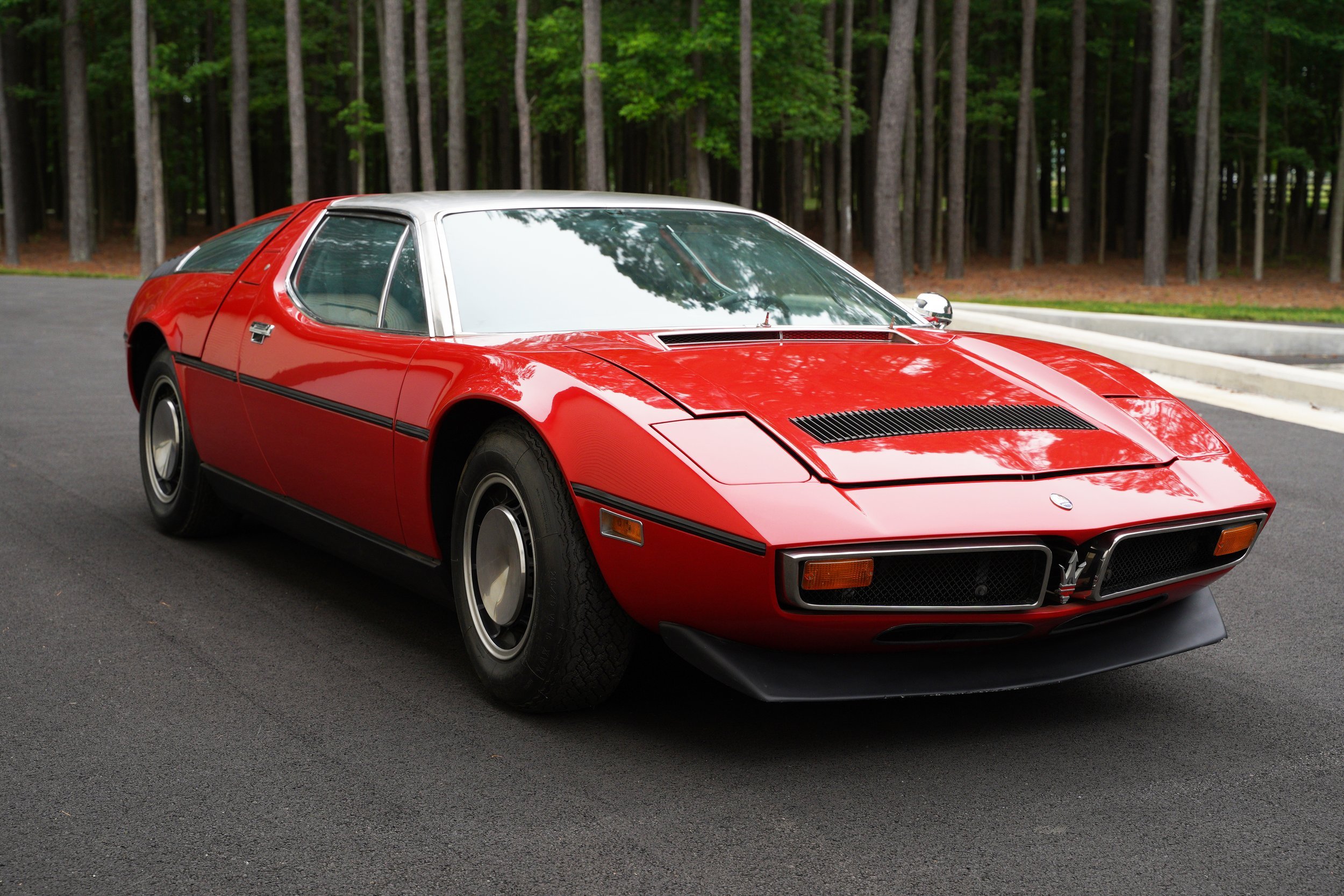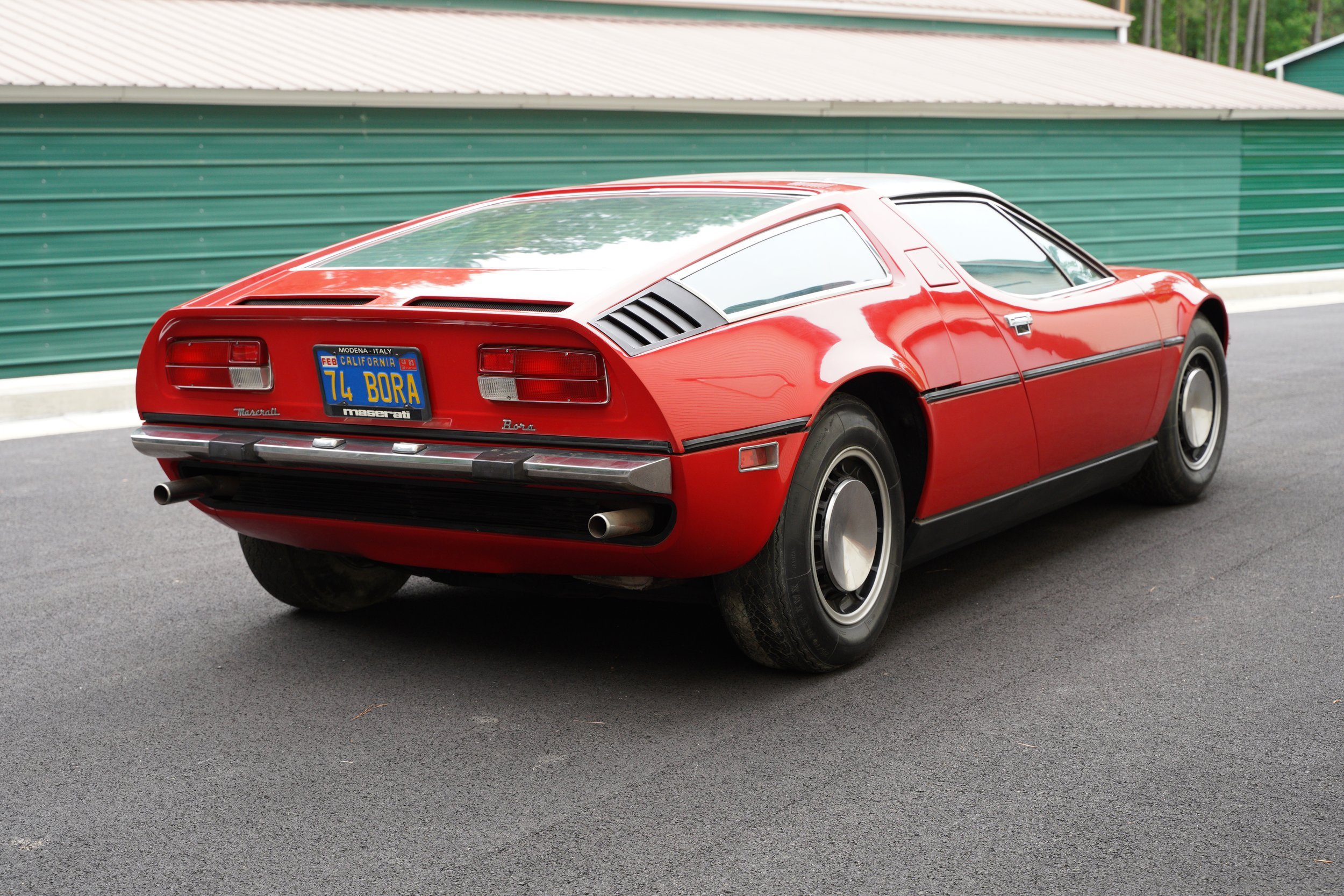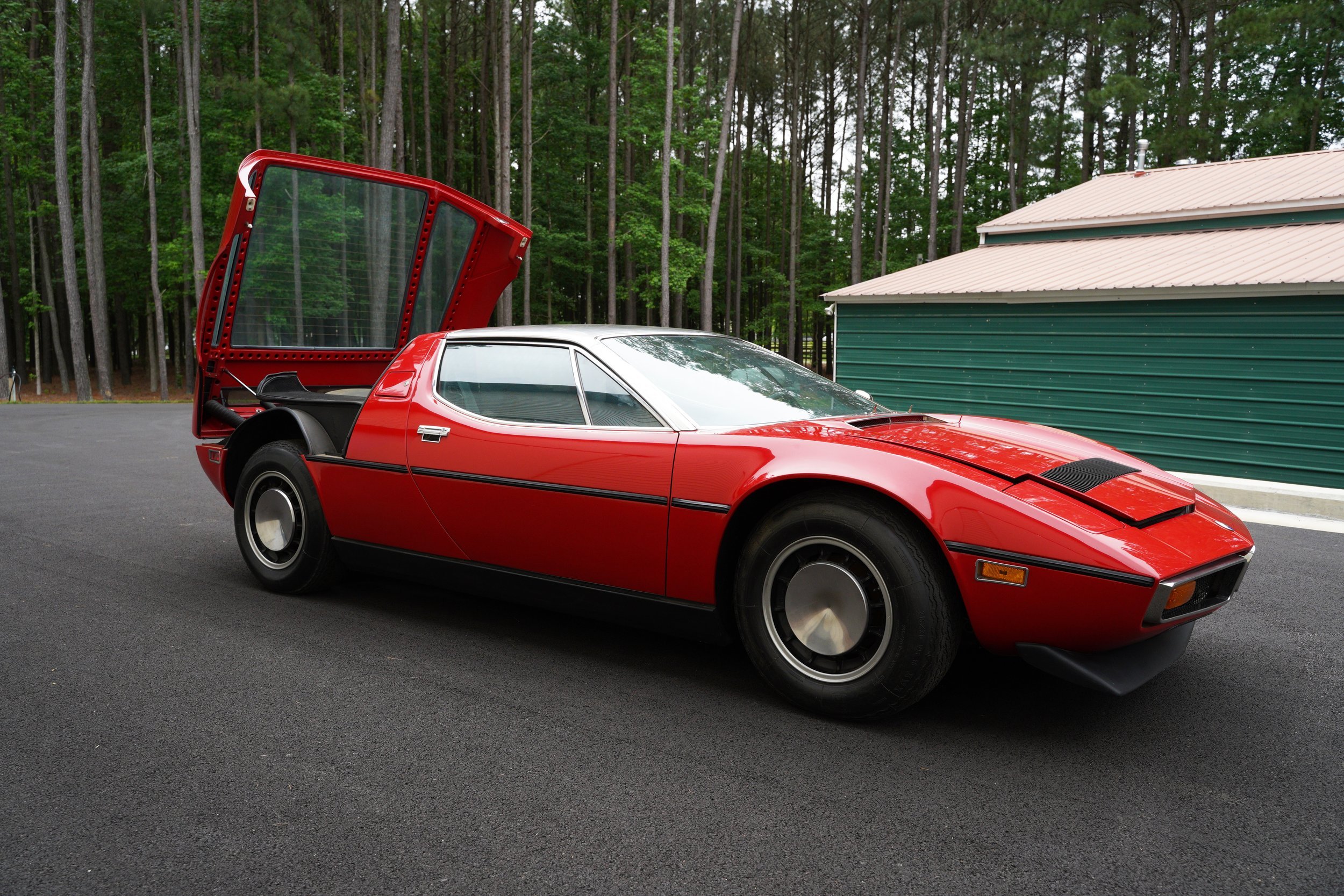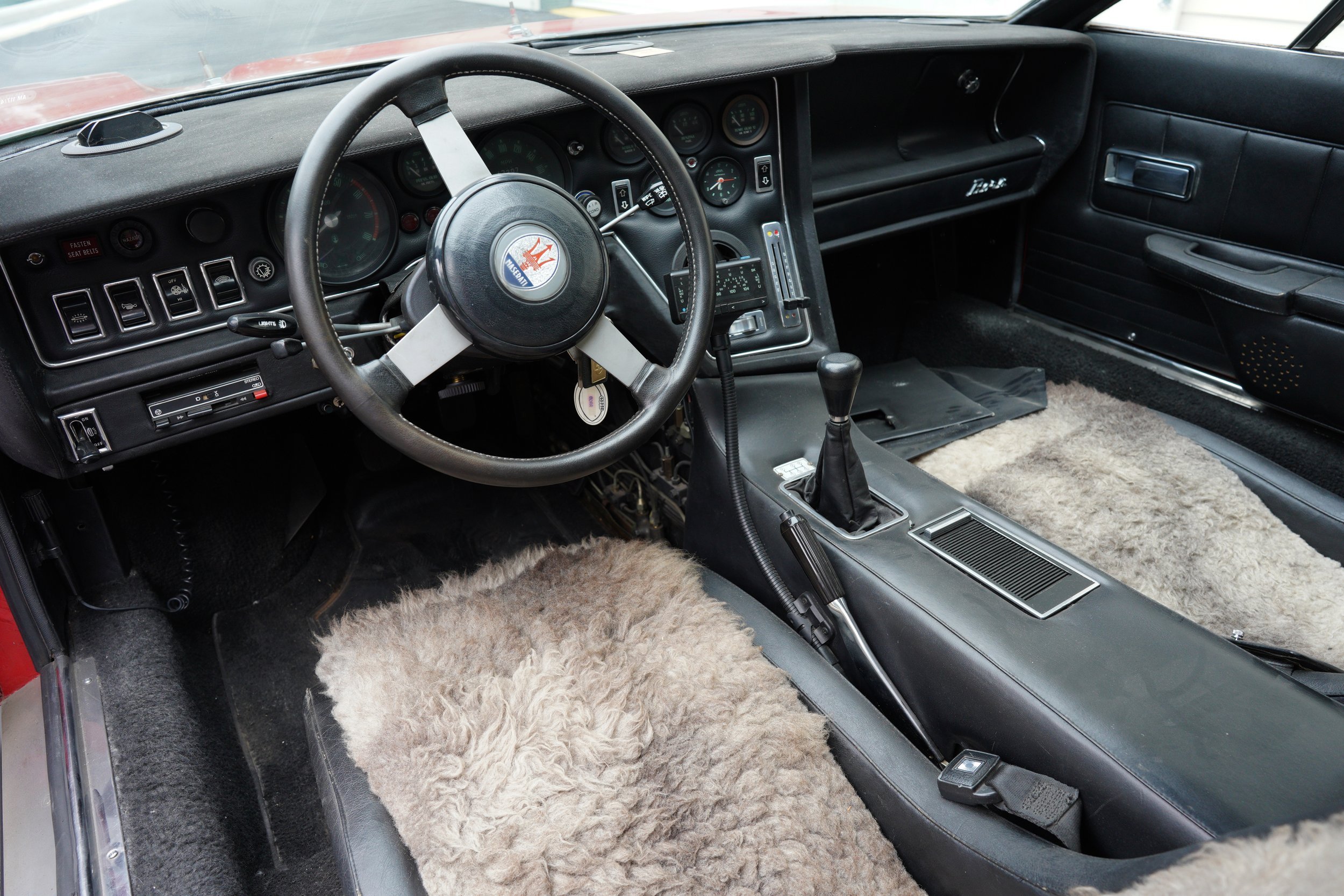1974 Maserati Bora Tipo AM117






First mid-engine Maserati production car
Independent 4 Wheel Suspension
Low drag coefficient body styled by Ital Design
Hydraulic-controlled components
This Maserati Bora in Rosso Fuoco (Red) is a low mileage example of Maserati’s entry into the Super Car market with its first venture into mid-engine street vehicle technology. Soon after Maserati’s acquisition by French manufacturer Citroen, the Bora was conceived to take on the Ferrari 365 GT4 and Lamborghini Miura, all flagship sports cars with the latest technologies. By using Citroen’s innovative application of hydraulics and a focus on comfort amenities, the Bora set high marks for smooth and quiet performance, despite having a drive train derived from a racer. Not only was the Maserati Bora fast with a top speed of over 170mph, it also looked fast with its sensuous body style designed by Georgetto Giugiaro of Ital Design. The combination of technology and beauty resulted in this car being bought by Dr. Nick Begovich, an engineer and physicist with an affinity for mid-engine cars with unique technological features. His collection was acquired by the Audrain in 2020.
The Bora was first displayed at the 1971 Geneva Auto Salon after 3 years of planning and guidance under the watchful eye of engineer Guilio Alfieri. His adaptation of the “Birdcage” Tipo 63-65 racer’s mid-engine V8 into a production street car gave Maserati its first vehicle with 4-wheel independent suspension along with the 4 cam 16 valve OHC 4.7-liter V-8 engine. Placed longitudinally behind the driver and passenger, the engine drove the rear wheels through a 5-speed ZF transaxle. While much of the car’s frame is a steel monocoque that incorporates the body in the chassis structure, the engine, transmission, and rear suspension are supported by a separate tubular steel structure. To reduce engine noise in the cockpit, Maserati utilized dual pane glass to separate the engine bay and added carpet inside the rear cowling to absorb noise and vibration. Many of the car’s mechanicals, including brakes, headlight covers, and a unique adjustable driver’s pedal cluster are all operated through a central hydraulic system, innovated by Citroen. Rather than having adjustable seats, the driver pedal cluster moved fore and aft and at different angles to adapt to driver size. The steering column also was telescopic, and the angle adjusted to suit the operator and ease entry into the car.
While the mechanical construction of the Bora aided performance, it also benefited from having the latest innovation in body design. The early 70’s saw a distinct move towards “wedge shaped” car bodies as they were believed to reduce drag and cut through the air making the car faster and more fuel efficient. When drawing the Bora, Giugiaro incorporated some of the wedge type and sharp-edged features into the design but kept sufficient curved lines in the wheel arches and roof line to maintain its Italian beauty. The result was a body with a drag coefficient of only 0.30 which even today would be considered very aerodynamic. Its pop-up headlights were hydraulic controlled.
Unlike rival supercars from Ferrari, deTomaso, and Lamborghini, the Bora owner didn’t lack convenience and comfort items. Power windows, radio, a full-size trunk, and air conditioning were standard features of the Bora giving the car characteristics more typical of contemporary GT cars.
Produced from 1971 through 1978, only 564 examples of the Bora were built and sold. In 1976 Citroen sold Maserati to deTomaso who soon lost interest in promoting the model against its own Pantera and Mangusta mid-engine models. Engine size was increased to 4.9 liters, but the Bora was outsold by the V-6 powered Merak which mimicked the basic body style of the Bora but adopted a 2+2 cockpit arrangement and was more affordable. Today, the Maserati Bora remains a rare and very desirable car for collectors and enthusiasts, and it serves as an example of the evolution of the modern super car. Blending comfort, style, and innovation meant that driving a high-performance car at speed didn’t need to compromise the driver’s experience.
Specifications:
Engine: V8 Double Overhead Cam, 16 valve, 4.7 Liter, 4 Weber Downdraft Carburetors, 5 Speed Manual ZF Transaxle
Brakes: 4-wheel hydraulic disc
Suspension: 4 Wheel Independent Suspension, Double wishbone front and rear, coil springs
Performance: 306hp (270 US models) 0-60mph 6.2 seconds
Curb Weight:4043 lbs
Top Speed: 171 mph

